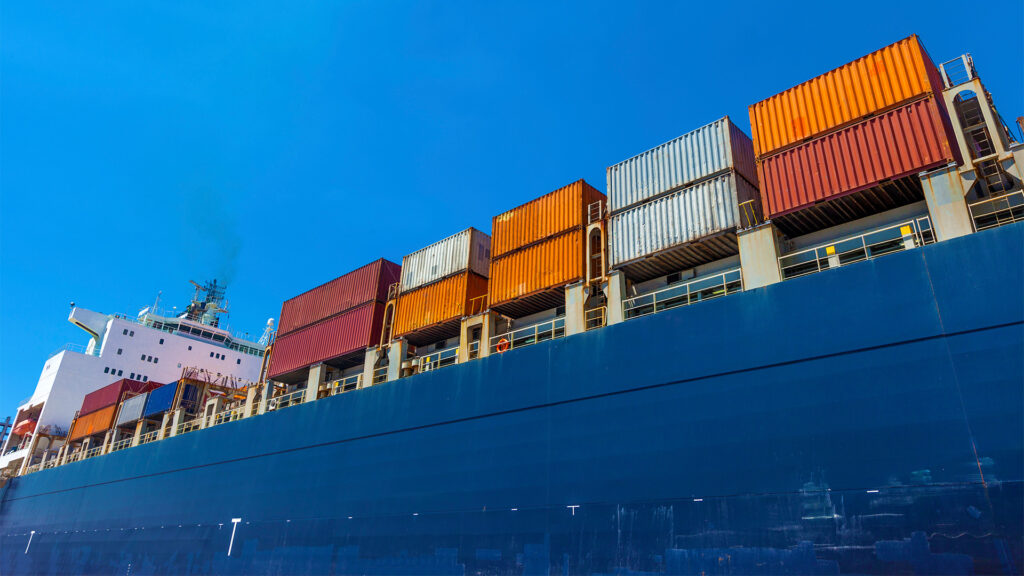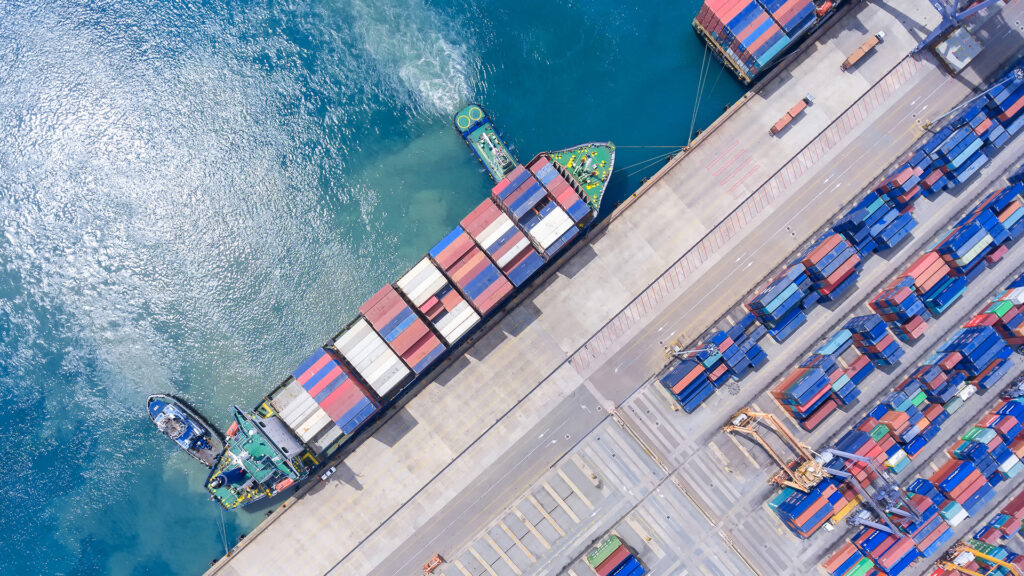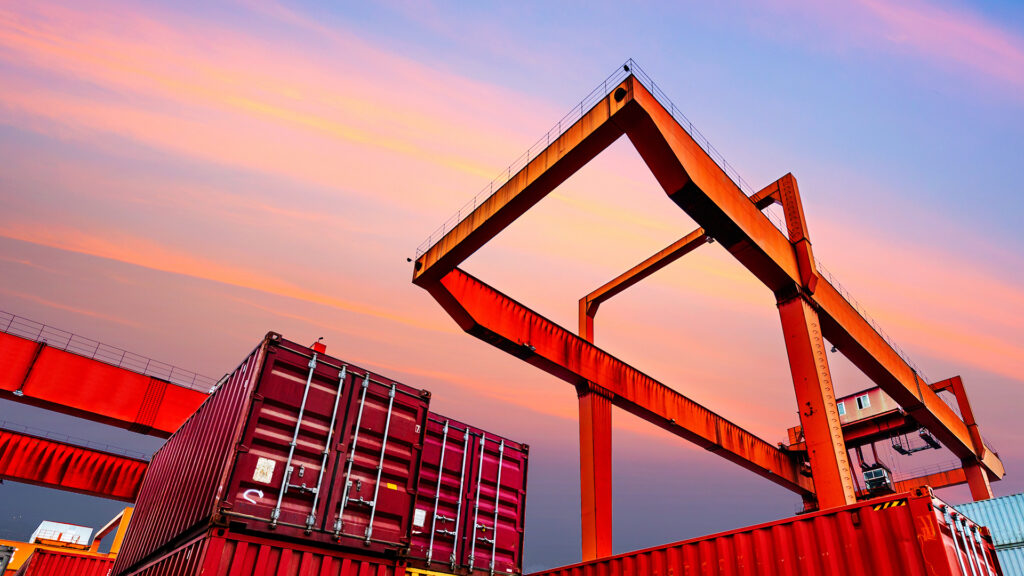
Comprehensively Yachts – Industry Briefing
At the end of another busy year for our yacht team and the yachting industry as a whole, we are pleased to publish our latest yachting industry briefing.
2019 has been a landmark year for the HFW yacht team, with the launch of an office in Monaco following the hire of the market-leading partners Ian Cranston, Andrew Charlier (former Global Head of Yachts at Ince & Co) and Marco Crusafio and their team. This development complements our existing London and Paris based yachting practices and means that we are more than ever able to service the European heart of the yachting industry.
In recognition of our commitment to the UK’s yachting industry we have joined Superyacht UK and its parent body, British Marine, and we look forward to playing our part in this leading trade association.
In addition, as the trend in exploration yachting grows and new large yacht markets continue to emerge outside of Europe, North America and the Caribbean, we are seeing increasing demand across our global network of offices for local expertise and support in relation to yachting matters.
With the 2021 America’s cup in New Zealand encouraging many yacht owners to undertake an extended Pacific cruise, we open this edition of our Yacht Market Briefing with a piece from our Australian offices summarising the law surrounding the operation of visiting yachts in Australian waters.
Next, with environmental matters increasingly at the fore, our yacht finance colleagues ask whether the newly launched Poseidon Principles will soon be applied by those lending to the yachting industry?
The danger of fire at sea is well known but the risk posed by lithium-ion batteries stored on board is only now emerging. Our admiralty and crisis management experts take a brief look at the subject and its possible implications for those operating or planning to operate with these batteries on board.
The reduction in capacity in the marine insurance market, and particularly the yacht insurance market is well known. However, it is now beginning to have unforeseen consequences. Our ship finance and marine insurance experts look at the possible implications for mortgagees’ indemnity insurance.
Finally, our Dubai office explore the latest developments in yachting in the United Arab Emirates and consider whether the UAE might become the next big yachting destination.
But first a word on Brexit.
Following the UK’s election last week of a Conservative Government with a significant majority under Prime Minister Boris Johnson, it is now highly likely that the UK will leave the EU on 31 January 2020. However, the UK will remain in the EU customs union during the transition period until at least 31 December 2020. If no trade deal has been struck between the UK and the EU by the end of this transition period this might have real implications for yachting, including the possibility that a yacht owned by a UK resident might qualify for the temporary admission relief from VAT (TA) in the EU.
We anticipate that negotiations during the course of 2020 and potentially beyond, will ultimately lead to a Free Trade Agreement being entered into. Such a deal will need to be carefully analysed for any implications it might have for yachting but we think it unlikely that it will result in a UK resident being able to bring its yacht into the EU under TA.
In the meantime, those with yachts based in the UK but on which VAT was paid in one of the remaining 27 Member States or yachts based in the EU but VAT paid in the UK will need to ensure their yacht is in the correct jurisdiction as and when the UK does leave the EU to ensure there can be no suggestion that such VAT paid status is lost.
Yachting Down Under
With its endless beaches and pristine waters waiting to be explored, Australia provides a spectacular destination for large yachts. However, to protect its maritime economy and environment, including some of the world’s most spectacular flora and fauna, Australia applies strict laws to visiting and imported yachts.
Before Entering Australia
Australian Customs should be notified at least 96 hours before a yacht arrives in Australian waters and the yacht should display the International Pratique Q-Flag upon arrival. Such notification should include, as a minimum, the yacht’s: (a) name; (b) flag and port of registration; (c) intended first port; (d) estimated time of arrival; (e) last four ports visited; and (f) crew and guest manifest. Details of any animals and goods on board that might give rise to a biosecurity concern should also be notified (see below). The master, crew and guests on board (insofar as they are not residents or citizens of Australia) must all be in possession of a valid visa before entry.
Entering Australia
There are numerous ways in which a yacht can be treated upon its arrival. Relevant factors include the yacht owner’s personal circumstances, how long he/she intends the yacht to be in the country and how the yacht is to be operated whilst there.
Such treatment options include (a) a control permit; (b) temporary importation; (c) temporary licence; or (d) formal importation.
Control Permit
If a yacht is to be operated on a purely private basis and the yacht owner is a tourist or temporary resident of Australia, the yacht will be eligible for a control permit provided that it:
- arrives from overseas and stays no longer than 12 months in Australian waters before departing for an overseas destination;
- arrives under its own power and not as cargo; and
- is not marketed for sale whilst in Australia.
Temporary Importation
Those owners still intending to operate their yacht privately but who are either Australian residents or in possession of a visa permitting a more extended stay in Australia may wish to consider temporarily importing their yacht into Australia. To qualify for temporary importation:
- the yacht must be exported within 12 months of its arrival date; and
- an appropriate bank guarantee or other form of security in the amount of the Goods and Services Tax (GST) and duty that would have been due on the yacht’s value had the yacht been fully imported must be provided.
Temporary Licence
Operation of a yacht commercially in Australia has historically required the yacht to be fully imported, registered under the Australian flag and with GST and duty paid in full in the manner described below. This put many yacht owners off visiting Australia and proved a barrier to the development of the Australian yachting industry.
On 5 December 2019, the Australian Parliament passed the Special Recreational Vessels Act 2019 (SRV). The SRV creates a special licensing regime by which the owners or charterers of yachts can apply for a temporary licence (up to 12 months in duration) to operate a foreign flagged yacht commercially within Australian territorial waters. Operation under a SRV licence does not amount to an importation into Australia.
In addition, the SRV disapplies those provisions of the Coastal Trading (Revitalising Australian Shipping) Act 2012 (CTA) considered impractical for yachts, including the requirement that each voyage start and finish at a different point.
Formal Importation
Those commercial yachts not operated under an SRV licence will need to be fully imported and will continue to be subject to the regime laid down by the CTA.
Recreational Boat Licence
Save in the Northern Territory, all yachts, irrespective of their status, will need a recreational boat licence issued by each Australian state they pass through.
Tax and Duty
For as long as a yacht satisfies the requirements for a control permit, temporary importation or temporary license it will not be liable for GST or duty in Australia. However, if for whatever reason the yacht ceases to meet such requirements or is otherwise formally imported into Australia, it will be liable for GST at the rate of 10% and duty at the rate of 5% of its value.
Further, the registered owner of a yacht operating commercially in Australia (whether under an SRV licence or following formal importation) will need to account for the GST due on any charter hire earned whilst the yacht is operating in Australia. Accordingly it will need to be registered for GST in Australia and a mechanism for the collection and payment of such GST put in place.
Biosecurity
Australia takes its biosecurity very seriously. As noted above, all items of biosecurity concern must be declared to a biosecurity officer on arrival. Further, if there is any material of biological origin on the yacht, it may be necessary to obtain an import permit under the Environment Protection and Biodiversity Conservation Act 1999 (Cth). It is an offence to discharge ballast water in Australian waters unless specifically exempted. All vessels, including yachts, must discharge or exchange ballast water at least 12 nautical miles from the Australian coastline. Further information can be found here.
Summary
Yacht owners and managers may find compliance with Australian laws governing the importation and operation of yachts complicated. However, with the careful planning and the right local support they can be safely navigated and, particularly given the long awaited enactment of the SRV, Australia now really is a destination that every large
yacht should visit!
Poseidon Principles
As previously reported, the global shipping industry and its regulators are increasingly focussed on the environment. Currently, the most topical example of this is the implementation of a global sulphur cap for marine fuels by the International Maritime Organisation (IMO), which means from 1 January 2020 all vessels, including yachts, will have to use marine fuels with a sulphur content of no more than 0.50% unless in an area with a more stringent cap.
However, it is not just the regulators driving an environmental agenda. A group of leading ship finance banks have between them developed and signed up to a new global framework for responsible ship finance known as the Poseidon Principles (see https://www.poseidonprinciples.org), the purpose of which is to assess and disclose whether their ship finance portfolios align with the IMO’s greenhouse gas emission targets.
Signatories have pledged to ensure that any lending decision they make takes into account a variety of climate considerations and to assess and report annually on the alignment of their ship finance portfolios. These banks will from now on require borrowers to provide certain environmental data on an ongoing basis so that they might monitor compliance with the IMO targets.
Whilst at present, the Poseidon Principles only apply to large commercial ships, with the increasing focus on emissions, particularly by coastal communities, including those in the south of France, it seems only a matter of time before those banks engaged in the financing of yachts also begin to review and update their lending criteria and environmental covenants. Owners looking to finance the purchase of a yacht or leverage an existing yacht should bear in mind that the choice of financiers may, in the future, be restricted if the yacht in question is not aligned with the applicable emissions targets.
Storing up trouble: issues with lithium-ion batteries
In September 2019, Transport Malta published a safety investigation report relating to a fire which resulted in the constructive total loss of a multi-million Euro yacht1. The report found the seat of the fire to be the lithium-ion batteries stored on board. Lithium-ion batteries have long been known to be a source of fire if not handled and stowed correctly and have been causative in a number of fires in aeroplanes and cars, including a Tesla Model X.
Background
As the yachting industry moves to reduce its carbon footprint and embrace more sustainable energy sources, lithium-ion batteries are becoming more common on board yachts. In particular, it has become increasingly common for owners to purchase aftermarket toys that use lithium-ion battery packs as a power source.
The number of maritime fires caused by lithium-ion batteries is not widely publicised; however, in addition to the above, reported incidents include fires on board a racing yacht and the dive vessel CONCEPTION. The CONCEPTION fire tragically killed 34 people and prompted the US Coast Guard to issue a safety bulletin recommending that commercial boat owners limit unsupervised charging of mobile phones.
To appreciate the potential risk posed by lithium-ion batteries it is necessary to understand how they work. Lithium-ion batteries contain an electrolyte and anode, both of which are highly flammable. A thermal runaway event (where flammable gases and oxygen are produced in an exothermic reaction) can occur in lithium-ion batteries due to overcharging, over-discharging, exposure to excessively high or low temperatures, internal short circuits and external damage and can result in a fire or explosion. It is also worth noting that, for the most part, a lithium-ion battery fire can only really be cooled, contained and suppressed. Extinguishing a lithium-ion battery fire with 100% certainty is not always possible due to the thermal runaway. Further, since lithium-ion battery fires do not require oxygen to burn, they are considered to be a “chemical fire”. Attempts to extinguish a lithium-ion fire using conventional means, such as water, may exacerbate the situation considerably, even to the point where the battery can explode. Most crew competency and firefighting courses provide some basic training in how to tackle these types of fire, however the nature of the fire may not be immediately apparent to the crew.
In the loss of the yacht reported by Transport Malta, the batteries in question were being used to power electric surfboards and were stored in the yacht’s garage space. The report concluded that:
- the crew did not seem to be fully aware of the hazards associated with lithium-ion batteries;
- since the garage space was not considered a service space, additional measures to extinguish and prevent the spread of the fire were not in place; and
- there was no gas detector fitted in the garage, which could have provided an early warning.
- The report recommended a review of the Commercial Yacht Code and the Flag State Administration’s initial inspection and survey reports to take into account the toys stored in a garage space.
New building
This report has a number of implications for yacht owners, insurers and builders. Before a yacht is built, designers should consider whether or not it is necessary to fit spaces which will be used to store lithium-ion battery powered toys with adequate remotely operated firefighting systems, gas detectors and fire-resistant divisions sufficient to deal with lithium-ion fires. Classification Societies should be consulted at an early stage and guidance sought as to the storage, charging and use of lithium-ion battery powered toys. Class Surveyors should also be wary of approving yachts that do not have sufficient measures to deal with lithium-ion batteries, where it is likely that equipment containing them will be purchased and installed after delivery.
Training
Crew training is key to mitigating the risk. Crewmembers should understand the risks involved with storing and charging lithium-ion batteries and the difficulties and dangers associated with fighting fires caused by them. An example of the latter was given in October 2019, when a fire in the battery room of the ferry YTTERØYNINGEN caused an explosion resulting in 12 professional firefighters requiring hospital treatment for exposure to gases coming from the batteries.
Insurance
Finally, the implications for a yacht’s insurance should be considered. Given a yacht owner’s duty of utmost good faith to its insurers, the underwriters should be made aware of the presence of any lithium-ion batteries on board. Particular attention should be paid to aftermarket toys, which can use large lithium-ion batteries and are often added after insurance has been purchased or renewed. A failure to make underwriters aware of the presence of these battery-powered toys may give rise to the insurance contract being considered void and underwriters declining cover.
Further guidance on protection against lithium-ion battery fires can be found in the UK’s Marine and Coastguard Agency guidance note MGN 550 (M+F).
With thanks to Mark Ross, Senior Forensic Investigator, of EFI Global for input on technical matters.
A bleak outlook for Mortgagees’ Interest Insurance (MII)?
Where a yacht is financed, the lender / mortgagee bank will typically, as part of the security package, take a mortgage and an assignment of the yacht owner’s primary marine insurances. The assignment of insurances protects the mortgagee bank in case there is a major casualty and the owner is unable to repay the loan, because under the terms of the assignment the insurance proceeds will be payable to the mortgagee bank up to the value of the remaining debt.
But, what if the owner’s primary insurances do not pay out, for example where they are rejected or declared void on the grounds that the owner has not complied with the policy terms? In these circumstances, the assignment of insurances would be rendered worthless and the mortgagee bank would be unable to recover the proceeds. This is where MII steps in: it provides contingent coverage protecting mortgagee banks for amounts up to their outstanding indebtedness in the event that claims under the underlying marine polices are not paid within a certain pre-agreed period. The MII insurers will pay the mortgagee bank at the end of the pre-agreed period, and thereafter, the MII insurers will pursue the primary marine insurers for recovery.
Traditionally, MII has been a very low premium business and markets have been soft. But premiums have been rising dramatically in recent months and it has become increasingly difficult to find insurers willing to cover this very specific but real risk. The reduction in availability of MII is symptomatic of the wider issues affecting the London marine insurance market, namely following a prolonged period of low premium and rising claims, a number of major providers of marine hull insurance have left the market, either of their own volition or at the request of those who run the Lloyds Market and many of those who remain have greatly scaled back their exposure to this sector.
In addition, those who previously wrote MII may be having a tough time recovering payments made to mortgagee banks under their MII policies. In a recent case, an MII insurer made a payment to a mortgagee bank upon the expiry of its pre-agreed period, following what was claimed to be a constructive total loss of the BRILLANTE VIRTUOSO. The MII insurer then brought a subrogated claim against the vessel’s hull and war risks insurers in the name of the mortgagee bank, together with the owners as co-assureds, for US$77million plus interest. The owners’ claim was struck out as they failed to comply with the terms of a court order. The MII insurers continued their subrogated claim but this too was eventually struck out because the Commercial Court found that the ship had been fraudulently destroyed on the instructions of its beneficial owner and this was not considered an insured peril. This judgement places the MII insurer (bringing its subrogated claim in the name of a co-assured mortgagee bank, having already paid out to the mortgagee under the MII policy) in an invidious position when an owner is found to have acted with the intention to defraud its insurers.
With a shrinking marine insurance market and MII, possibly, becoming an increasingly unattractive risk for insurers, lenders to many yachts and commercial ships are finding it impossible to procure MII. We have found this to be particularly true for yachts because the insurance market considers there to be a more significant risk of primary insurers disputing or rejecting claims in this market.
If MII can be found, premiums are likely to be much higher than they once were and in many cases mortgagee banks may find themselves forced to accept that MII simply is not available, particularly where the insured value (i.e. the loan amount) is relatively small and/or the tenor of the loan is short.
Yachting in the United Arab Emirates (UAE)
The UAE has much to offer yachting, from the remote dramatic cliffs and mountainous backdrops of the eastern and northern Emirates to the towering skyscrapers of Dubai and is increasingly being considered as an alternative winter destination for European yachts. With interest in yachting in the UAE increasing both domestically and internationally, the UAE yachting industry is tipped for significant growth. We look in brief at the historical checks on growth and how they are being addressed in the face of such potential.
Government Support
Growing the yachting industry has been identified as a key component in the UAE’s development and local administrations are increasingly seeing the opportunities posed. Across the UAE there is a drive for international development, and incentives are being made available by the governments of some of the Emirates to encourage the development of the infrastructure the yachting industry needs and expects and there is a growing awareness of the need to ease the regulatory burden on yachts calling in the UAE.
Infrastructure
Inadequate infrastructure has historically held back the industry’s growth in the UAE. However the success of local yacht builders such as Gulf Craft, the growing number of refit facilities and the expanding cluster of yachting professionals are all helping the UAE develop as a yachting destination and hub. Further, residential developers across the UAE are increasingly seeking to enhance the marine infrastructure of their developments and a number of marinas are planned or under construction. Dubai, in particular, is home to several marina development projects, including, Dubai Harbour, which when it opens in October 2020 will be the largest marina in the Middle East with over 1,100 berths. Other projects include the development of six marinas at Deira Islands and two new marinas at Palm Jumeirah. Marine infrastructure developments are not limited to Dubai, with Abu Dhabi also recently expanding the facilities at its Yas Marina.
Regulatory developments
The regulatory complications and restrictions on yachting, particularly for yachts registered outside of the UAE are well known. There is little in the way of a coordinated approach to such matters between the various Emirates, leaving yachts having to comply with a range of different regulatory requirements as they navigate the region. This has long served to dampen the potential of the UAE as a yachting destination, particularly for yachts in commercial operation.
Recent changes have made the regulatory landscape in the UAE for foreign-flagged yachts less complicated, though it remains challenging and the lack of harmonisation of rules across the UAE can discourage wider cruising. For example, as a general rule, yachts registered outside of the UAE may remain in the UAE for no more than 21 days and there are significant regulatory obstacles to their commercial operation in the UAE.
To stay longer, visas must be obtained for the crew. The visa process can be slow and with a system designed for commercial shipping, the flexibility expected by yacht owners is often elusive.
However, earlier this year Abu Dhabi streamlined the process required for non-UAE flagged yachts entering its waters via the Yas Marina and now offers more yacht friendly clearing services there than are to be found in other commercial entry ports. Abu Dhabi is also encouraging longer stays with six-month navigation licences and six-month visas for crew members.
The Dubai Maritime City Authority (DMCA), having also recognised the regulatory complications as a block on growth, has also implemented more lenient visa and cruising procedures and are pushing for a more coordinated approach across the UAE. A good example of this is the cruising permit recently introduced by the DMCA for overseas yachts, who, with such a permit in place, can now visit Dubai for up to 3 months without the need to obtain crew visas.
Greater coordination across the UAE, including the development of integrated maritime regulations, is essential if yachting is to reach its full potential in the UAE. The implementation of the UAE Yacht Code for private yachts over 24m by the UAE Classification Society, TASNEEF in 2014 was a step in the right direction and it is hoped will set the tone for future regulatory changes.
Summary
Whilst the authorities are increasingly enthusiastic about yachting and the infrastructure is fast catching up with European standards, the regulations as they apply to yachting across the UAE, for now at least, remain complicated. However, with care and forward planning, there is much to be enjoy about the UAE for a yacht owner and our Dubai office is on-hand to help yacht owners and managers plan for the safe navigation of this fascinating region.
HFW has over 600 lawyers working in offices across Australia, Asia, the Middle East, Europe and the Americas. We advise clients on legal issues in relation to all aspects of international commerce and we are regarded as one of the world’s leading shipping law firms. The expertise, experience and reputation earned in commercial shipping are carried into our yacht practice.
Comprehensively Yachts
Our yacht team has over 25 years’ experience of working in this intimate industry and our in-depth knowledge combined with
our international reach ensures we are pre-eminent in the field. For more information on HFW’s yacht team and the services we offer, please click here.
Footnotes –
- Transport Malta Marine Safety Investigation Unit. Safety Investigation Report No.: 16/2019.










